Breast milk is a valuable source of nutrition for babies, providing them with essential nutrients and antibodies to help them grow and develop. However, it is not always possible to feed the baby freshly expressed milk, and parents may need to store and reheat breast milk. This raises the question: how many times can you reheat breast milk?
Understanding Breast Milk Breast milk is a complex fluid that contains a variety of nutrients, including proteins, carbohydrates, and fats, as well as immune-boosting antibodies. It is essential for parents to understand how to store and handle breast milk properly to ensure that it remains safe and nutritious for their baby.
Key Takeaways
- Breast milk is a valuable source of nutrition for babies, providing them with essential nutrients and antibodies to help them grow and develop.
- Breast milk should be stored and handled properly to ensure that it remains safe and nutritious for the baby.
- Breast milk can be reheated, but it is important to follow guidelines to prevent contamination and ensure that it remains safe and nutritious.
Understanding Breast Milk
Breast milk is often referred to as “liquid gold” due to its numerous benefits for babies. Breast milk is a complex fluid that contains a variety of nutrients, antibodies, proteins, vitamins, enzymes, and immunologic properties that are essential for a baby’s growth and development.
One of the most important aspects of breast milk is its ability to provide protection against infections. Breast milk contains antibodies that are specifically tailored to a baby’s needs and can help protect against a wide range of infections, including ear infections, respiratory infections, and gastrointestinal infections.
In addition to antibodies, breast milk also contains a variety of other proteins and enzymes that can help support a baby’s immune system. For example, lactoferrin is a protein found in breast milk that can help prevent the growth of harmful bacteria in a baby’s gut.
Breast milk is also a rich source of nutrients, including vitamin C. While breast milk may not contain as much vitamin C as some formula brands, it is still an important source of this essential vitamin for babies.
Overall, breast milk is a complex and highly beneficial fluid that provides a wide range of nutrients and protective factors for babies. While it may not be possible to quantify exactly how many times breast milk can be reheated, it is generally recommended that breast milk be used within 24 hours of being expressed to ensure that it remains fresh and safe for babies to consume.
Breast Milk Storage Guidelines
Breast milk storage is an important aspect of breastfeeding for mothers who want to ensure their babies are getting the best nutrition possible. Here are some guidelines to follow when storing breast milk:
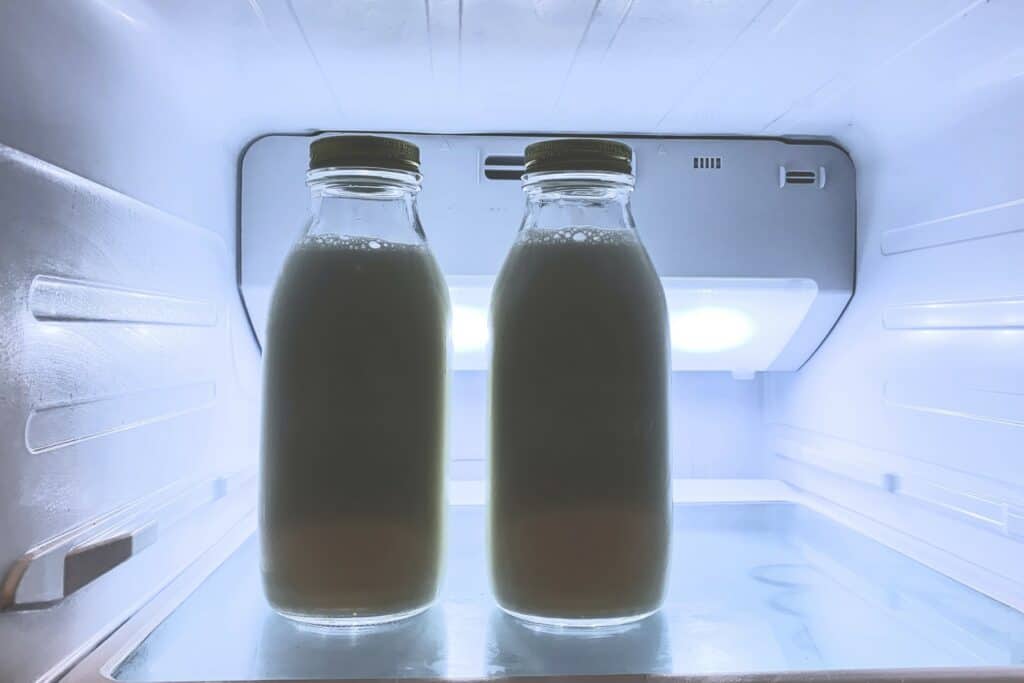
- Store breast milk in clean containers made of glass or BPA-free plastic. Do not use regular plastic bags or containers that may contain harmful chemicals.
- Use breast milk storage bags or storage containers specifically designed for breast milk. These should be sterile and have a secure seal to prevent leaks.
- Label each container with the date and time the milk was expressed. Use the oldest milk first to ensure freshness.
- Store breast milk in the back of the refrigerator or freezer, where it is coldest. Do not store it in the door or on the top shelf, as these areas may not be as cold.
- Breast milk can be stored in the refrigerator for up to 4 days at a temperature of 39°F (4°C) or lower.
- Breast milk can be stored in the freezer for up to 6 months at a temperature of 0°F (-18°C) or lower.
- For long-term storage, breast milk can be stored in a deep freezer for up to 12 months.
- When transporting breast milk, use an insulated cooler with ice packs to keep the milk cold.
By following these guidelines, mothers can ensure that their breast milk remains safe and nutritious for their babies.
Expressing and Handling Breast Milk
Expressing breast milk is an essential part of breastfeeding, and it allows mothers to provide their babies with milk even when they are away from them. It is important to handle the milk properly to ensure that it remains safe and nutritious for the baby.
Before expressing breast milk, it is important to wash your hands with soap and water. This helps to prevent the transfer of germs to the milk. Additionally, it is recommended to use a breast pump to express the milk. Breast pumps are designed to mimic the suction of a baby’s mouth, and they can help to ensure that the milk is extracted efficiently.
Once the milk is expressed, it should be stored in food-grade containers, such as glass or plastic bottles. It is important to label the containers with the date and time that the milk was expressed. This helps to ensure that the oldest milk is used first.
When handling expressed milk, it is important to keep it cold to prevent the growth of bacteria. The milk can be stored in the refrigerator for up to four days, or in the freezer for up to six months. It should be thawed in the refrigerator or by placing the container in warm water.
In summary, expressing and handling breast milk requires proper hygiene and storage techniques to ensure that the milk remains safe and nutritious for the baby. By using a breast pump, washing hands, using food-grade containers, and storing the milk at the correct temperature, mothers can provide their babies with the best possible nutrition.
Reheating Breast Milk
Breast milk is a valuable source of nutrition for babies, and it is important to handle and store it properly to ensure its safety and quality. When it comes to reheating breast milk, there are a few things to keep in mind.

One important thing to note is that breast milk should only be reheated once. This means that if you have already reheated a bottle of breast milk and your baby does not finish it, you should discard any remaining milk rather than attempting to reheat it again.
When reheating breast milk, it is important to do so gently to avoid overheating and creating hot spots that can burn your baby’s mouth. There are several ways to warm breast milk, including using a bottle warmer, placing the bottle in a bowl of warm water, or running it under warm tap water.
It is important to avoid microwaving breast milk, as this can create hot spots and destroy some of the beneficial components of the milk. If you do choose to use a microwave, be sure to stir the milk well and test the temperature before giving it to your baby.
When warming breast milk, it is best to aim for a lukewarm temperature rather than hot. This can help prevent burns and ensure that the milk retains its nutritional value.
Overall, reheating breast milk should be done with care and attention to ensure that your baby receives safe and nutritious milk.
The Impact of Reheating on Breast Milk
Breast milk is an excellent source of nutrition for infants, providing all the necessary nutrients, good bacteria, and antibodies required for optimal growth and development. However, many parents wonder if it is safe to reheat breast milk after it has been stored in the refrigerator or freezer.
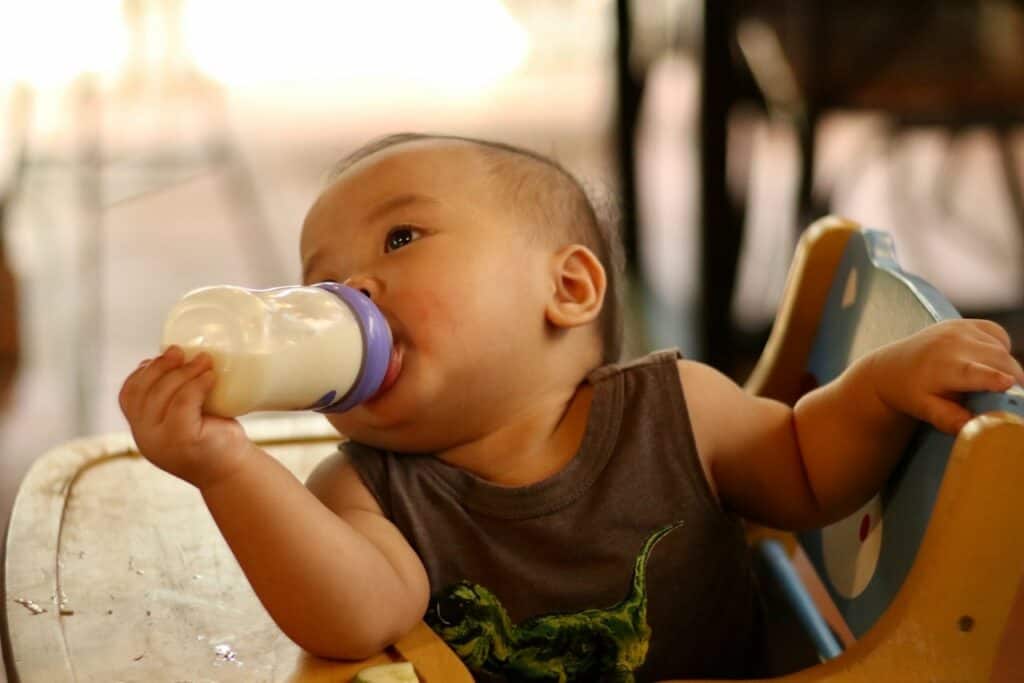
The answer is yes, it is safe to reheat breast milk, but there are some important things to consider. Reheating breast milk can affect its nutritional value, fat content, and good bacteria.
1. Nutrients
Breast milk contains a variety of essential nutrients, including proteins, carbohydrates, and fats, as well as vitamins and minerals. When breast milk is heated, some of these nutrients can be lost or damaged, especially if it is heated too quickly or at high temperatures.
2. Fat
Breast milk contains a significant amount of fat, which is essential for a baby’s growth and development. When breast milk is heated, the fat can separate, causing a layer of cream to form on top. This is normal and does not affect the nutritional value of the milk.
3. Good Bacteria
Breast milk also contains good bacteria that help to support a baby’s immune system and digestive health. When breast milk is heated, these bacteria can be destroyed, reducing their beneficial effects.
4. Nutritional Value
The nutritional value of breast milk can be affected by reheating, but it is generally safe to do so as long as it is done correctly. To minimize nutrient loss, breast milk should be reheated slowly and at a low temperature, ideally using a warm water bath or a bottle warmer.
In conclusion, reheating breast milk is safe, but it is important to do it correctly to minimize nutrient loss and preserve the good bacteria. Parents should also be aware that breast milk can only be reheated once, and any leftover milk should be discarded.
Preventing Contamination
When it comes to breast milk, it is important to take precautions to prevent contamination. Bacteria can grow rapidly in breast milk, especially if it is not stored properly or reheated more than once. Here are some ways to prevent contamination:
- Always wash hands thoroughly before handling breast milk.
- Use clean bottles, nipples, and pump parts.
- Store breast milk in clean, sterile containers.
- Label breast milk with the date and time it was expressed.
- Store breast milk in the back of the refrigerator or freezer, where it is coldest.
- Do not mix freshly expressed breast milk with already chilled or frozen breast milk.
- Thaw frozen breast milk in the refrigerator or under running water.
- Do not use a microwave to thaw or heat breast milk, as it can create hot spots that can burn a baby’s mouth and destroy beneficial nutrients.
- Use breast milk within 24 hours of thawing or heating.
It is important to note that harmful bacteria can contaminate breast milk if it is not stored or handled properly. Bacterial contamination can cause illness in babies, especially those with weakened immune systems. To prevent bacterial contamination, it is essential to follow proper storage and handling guidelines.
In summary, preventing contamination is crucial when it comes to breast milk. By following proper storage and handling guidelines, parents can ensure that their baby is receiving safe and nutritious breast milk.
Feeding Your Baby
When it comes to feeding your baby, it is important to ensure that they are receiving the right amount of nutrients. Breast milk is the most nutritious and natural food for babies, and it is recommended that babies be exclusively breastfed for the first six months of life. After this time, solid foods can be introduced, but breast milk should still be a part of their diet until at least one year of age.
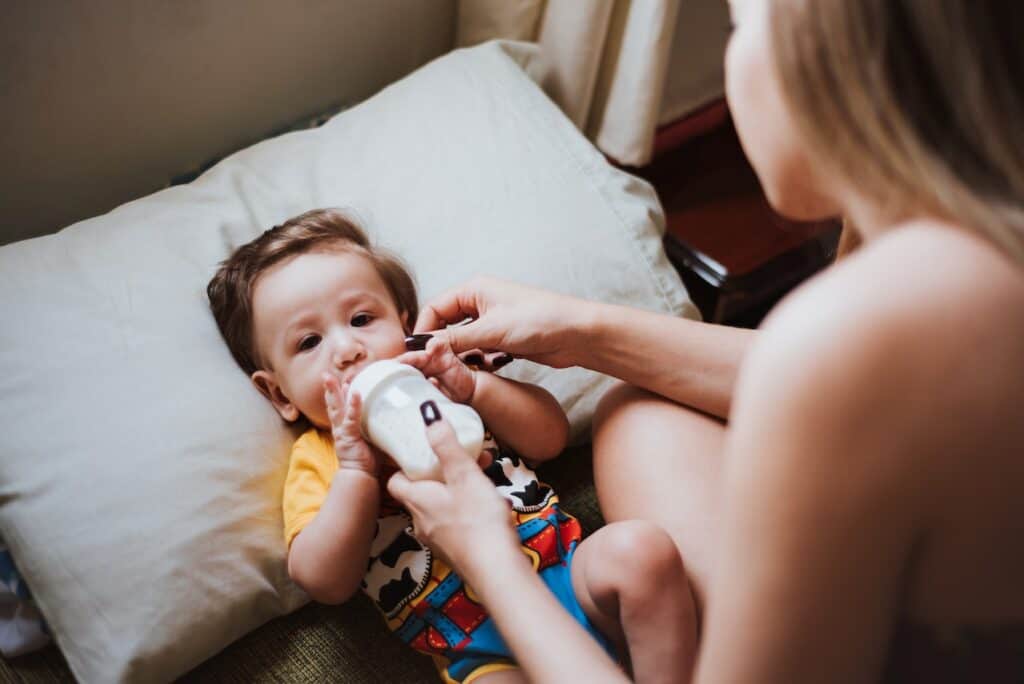
If you choose to use a bottle to feed your baby, it is important to make sure that the bottle and nipple are clean and sterilized before each use. This can help prevent the spread of bacteria and other harmful germs. When feeding your baby, make sure that they are in a comfortable position and hold the bottle at a slight angle to prevent air from being swallowed.
When reheating breast milk, it is important to do so safely. Breast milk can be reheated once, but should not be reheated multiple times. This is because each time breast milk is reheated, it loses some of its nutrients and can also become contaminated with bacteria. It is best to only heat up the amount of breast milk that your baby will consume in one feeding.
It is also important to note that fresh breast milk is always the best option for your baby. If you are unable to breastfeed, or if you need to store breast milk for later use, it is recommended that you use a breast pump to express the milk and store it in a clean, sterile container. Breast milk can be stored in the refrigerator for up to four days, or in the freezer for up to six months.
Overall, feeding your baby is an important responsibility that requires knowledge and care. By following these guidelines for feeding and storing breast milk, you can help ensure that your baby is receiving the best possible nutrition.
Dealing with Leftovers
Breast milk is a precious commodity and it is important to make sure none of it goes to waste. However, sometimes babies may not finish their bottle, leaving some milk behind. In such cases, it is important to know how to deal with leftover breast milk.
Firstly, it is important to note that breast milk can be stored in the refrigerator for up to 4 days and in the freezer for up to 6 months. If the leftover milk has been in the refrigerator for more than 4 days, it should be discarded. Similarly, if it has been in the freezer for more than 6 months, it should also be discarded.
If there is only a small amount of leftover milk, it can be added to the next bottle of fresh milk. However, if there is a significant amount left, it is best to store it separately. This will prevent contamination of fresh milk with bacteria from the leftover milk.
It is important to note that breast milk should never be reheated more than once. This is because each time the milk is reheated, it destroys some of the nutrients and antibodies present in the milk. Therefore, it is important to only heat up the amount of milk that the baby is expected to consume.
In case the baby does not finish the reheated milk, it should be discarded. This is because bacteria from the baby’s mouth can contaminate the milk, making it unsafe for consumption.
In conclusion, it is important to handle leftover breast milk carefully to ensure that it remains safe for consumption. By following the guidelines outlined above, parents can make sure that their baby receives the best possible nutrition while minimizing waste.
Thawing and Refreezing Breast Milk
Thawing breast milk is a common practice for mothers who have stored their pumped milk in the freezer. However, it is important to note that once breast milk has been thawed, it should not be refrozen. This is because the quality of the milk can deteriorate after each freeze-thaw cycle.
If a mother needs to use only a portion of the thawed breast milk, it is recommended to thaw only the amount needed and use it immediately. Any leftover milk should be discarded. It is also important to never thaw breast milk at room temperature or in warm water as this can cause the milk to spoil or lose its nutritional value.
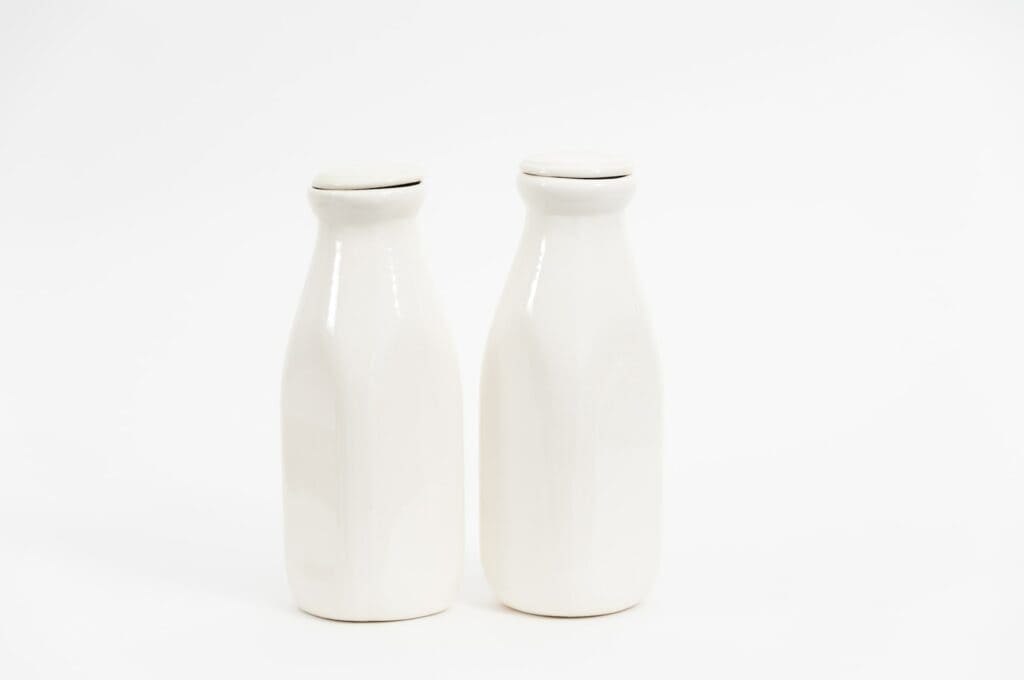
When thawing breast milk, it is best to use one of the following methods:
- Thawing in the refrigerator: Place the frozen breast milk in the refrigerator overnight to thaw. This method is recommended as it helps to maintain the quality of the milk.
- Thawing under running water: Place the frozen breast milk in a sealed container and run it under cool water until it is thawed. This method is quicker than thawing in the refrigerator but can cause the milk to lose some of its nutrients.
- Thawing in a bowl of warm water: Place the frozen breast milk in a sealed container and immerse it in a bowl of warm water. This method is not recommended as it can cause the milk to spoil.
It is important to note that once breast milk has been thawed, it should be used within 24 hours. Any leftover milk should be discarded.
In summary, it is not recommended to refreeze breast milk once it has been thawed. Thawing breast milk should be done using one of the recommended methods and the milk should be used within 24 hours of thawing.
When Not to Reheat Breast Milk
Breast milk is a precious commodity, and it’s important to handle it with care to ensure it remains safe and healthy for your baby. While it’s generally safe to reheat breast milk, there are some situations where it’s best to avoid doing so.
Spoiled Breast Milk
If breast milk has spoiled, it should not be reheated or consumed. Spoiled breast milk can make your baby sick, and it may have a sour or rancid smell. Signs of spoiled breast milk include:
- A sour or rancid smell
- A change in color
- Clumps or chunks
- Separation of the milk
If you suspect your breast milk has spoiled, it’s best to discard it and start fresh.
Previously Frozen Breast Milk
Breast milk that has been previously frozen should not be reheated more than once. Each time breast milk is thawed and reheated, it loses some of its beneficial properties, including antibodies that help protect your baby from illness. If you have leftover breast milk that has been thawed and reheated, it’s best to discard it rather than saving it for later.
Breast Milk Left at Room Temperature
Breast milk that has been left at room temperature for more than two hours should not be reheated or consumed. Bacteria can grow rapidly in breast milk that is not stored properly, and it can make your baby sick. If you’ve left breast milk out for more than two hours, it’s best to discard it and start fresh.
Breast Milk that Has Been Heated to High Temperatures
Breast milk that has been heated to high temperatures should not be reheated. Heating breast milk to high temperatures can destroy its beneficial properties, including antibodies that help protect your baby from illness. If you’ve heated breast milk to high temperatures, it’s best to discard it and start fresh.
In summary, while it’s generally safe to reheat breast milk, there are some situations where it’s best to avoid doing so. If breast milk has spoiled, been previously frozen, left at room temperature for more than two hours, or heated to high temperatures, it should not be reheated or consumed.
Professional Guidance
When it comes to reheating breast milk, it is important to follow professional guidance to ensure the safety and nutritional value of the milk. Here are some recommendations from various entities:

1. Lactation Consultants
Lactation consultants suggest that breast milk should only be reheated once. If the baby does not finish the reheated milk, it should be discarded. This is because reheating breast milk multiple times can cause a loss of nutrients and increase the risk of bacterial growth.
2. Academy of Breastfeeding Medicine
The Academy of Breastfeeding Medicine recommends that breast milk should only be reheated once and any leftover milk should be discarded. They suggest that breast milk should be thawed in the refrigerator or under cool running water and then heated in a container of warm water. It is important to avoid microwaving breast milk as it can create hot spots that can burn the baby’s mouth.
3. La Leche League
La Leche League recommends that breast milk should be reheated only once and any leftover milk should be discarded. They suggest that breast milk should be thawed in the refrigerator or under cool running water and then heated in a container of warm water. It is important to avoid boiling or microwaving breast milk as it can destroy the nutrients and protective properties.
4. Clinical Protocol #8
Clinical Protocol #8 from the Academy of Breastfeeding Medicine states that breast milk should only be reheated once and any leftover milk should be discarded. They suggest that breast milk should be thawed in the refrigerator or under cool running water and then heated in a container of warm water. It is important to avoid using a microwave or stove to heat breast milk as it can create hot spots and destroy the nutrients.
In summary, professional guidance suggests that breast milk should only be reheated once and any leftover milk should be discarded. It is important to thaw breast milk in the refrigerator or under cool running water and then heat it in a container of warm water. Microwaving or boiling breast milk should be avoided as it can destroy the nutrients and protective properties.
Breast Milk vs. Formula
Breast milk and formula are both viable options for feeding a baby, but they have significant differences. Here are some key points to consider when comparing breast milk and formula:
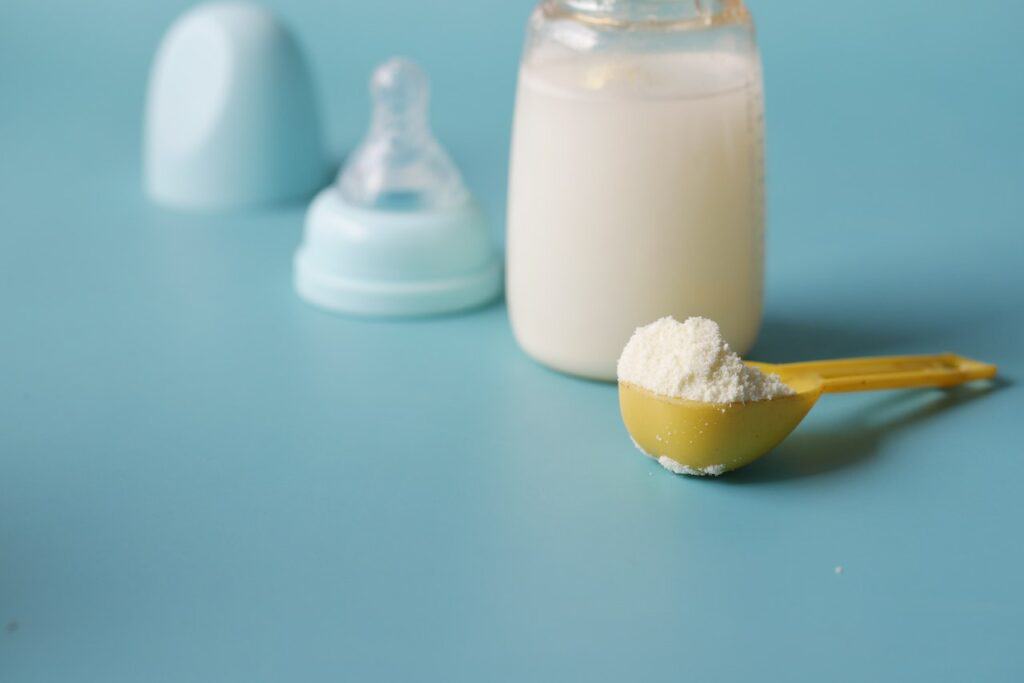
Nutritional Content
Breast milk is considered the gold standard for infant nutrition. It contains a unique combination of proteins, fats, and carbohydrates that are tailored to meet a baby’s changing needs. Breast milk also contains antibodies that help protect against infection and disease.
Formula, on the other hand, is designed to mimic the nutritional content of breast milk as closely as possible. While it provides adequate nutrition for most babies, it does not contain the same level of immune-boosting properties as breast milk.
Convenience
Breastfeeding requires a significant time commitment from the mother, especially in the early months when a baby needs to eat every 2-3 hours. Breastfeeding can also be challenging for mothers who work outside the home or who have other caregiving responsibilities.
Formula, on the other hand, is much more convenient. It can be prepared in advance and stored in the refrigerator or freezer. It can also be fed to the baby by anyone, not just the mother.
Cost
Breastfeeding is generally less expensive than formula feeding. Breast milk is free, and breastfeeding mothers may also save money on medical expenses since breastfed babies tend to have fewer illnesses and infections. However, breastfeeding can be costly if a mother needs to purchase a breast pump or other breastfeeding supplies.
Formula feeding can be expensive, especially if a baby requires a specialized formula due to allergies or other medical conditions. However, formula feeding may be less expensive if a mother needs to return to work and cannot breastfeed.
Reheating
Breast milk and formula can both be reheated, but there are some important differences to keep in mind. Breast milk should be warmed slowly in a bowl of warm water or a bottle warmer. It should not be microwaved, as this can cause hot spots that can burn the baby’s mouth.
Formula can be reheated in a similar way, or it can be microwaved as long as it is stirred well and the temperature is checked before feeding.
In general, breast milk can be reheated once, but it should not be reheated multiple times. Formula can be reheated multiple times, but any unused formula should be discarded after 24 hours.
Conclusion
Breast milk and formula both have their advantages and disadvantages. Ultimately, the decision of whether to breastfeed or formula feed is a personal one that should be based on a variety of factors, including the mother’s lifestyle, the baby’s needs, and the family’s budget.
Related Posts:
Frequently Asked Questions
Can you reheat breast milk twice according to CDC guidelines?
The CDC recommends that breast milk should only be reheated once. After the first time, any remaining milk should be discarded.
Can I use a bottle warmer to reheat breast milk?
Yes, a bottle warmer can be used to reheat breast milk. However, it is important to follow the manufacturer’s instructions and check the temperature of the milk before feeding.
How long is refrigerated breast milk good for after reheating?
Refrigerated breast milk should be used within 24 hours after reheating. Any leftover milk should be discarded.
How many times can formula be reheated compared to breast milk?
Formula should only be reheated once, just like breast milk. Any remaining formula should be discarded.
What temperature should breast milk be reheated to?
Breast milk should be reheated to no more than body temperature, which is around 98.6°F (37°C). This can be achieved by placing the bottle in a container of warm water or using a bottle warmer.
Can cow’s milk for babies be reheated multiple times?
No, cow’s milk should not be given to babies under one year old. Breast milk or formula should be used instead.

Iesha is a loving mother of 2 beautiful children. She’s an active parent who enjoys indoor and outdoor adventures with her family. Her mission is to share practical and realistic parenting advice to help the parenting community becoming stronger.
